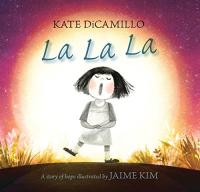
A girl’s search for friendship becomes an adventure as she travels with her song, “la la la”, as her only company. Richly hued, radiant illustrations reveal the girl’s journey. A note from both the author and illustrator provides insight into this multilayered, memorable, nearly wordless story.
La La La

When a whale becomes caught in fishing net, the father is concerned about how he will provide for his family. His son, however, is determined to set the huge mammal free. Against his father’s wishes, he returns to the entrapped whale and successfully frees it. Shimmering illustrations present a compelling story of compassion and courage.
The Boy and the Whale

Even the worst bad seed can become better. Just ask the sunflower seed who became a seriously BAAAAD seed when the petals fell and he was almost eaten by a giant! Now he again says thank you and at least tries to be better. Readers will appreciate the broad humor in overstated text and illustration and just might see part of themselves in the bad seed.
The Bad Seed

After his initial fall and being put back together, Humpty Dumpty becomes more fragile. He’s now afraid of heights but longs to fly. How he climbs back to the top of the wall and is able to go beyond is surprising and exhilarating. Illustrations from varied perspectives add depth and dimension to an inventive story.
After the Fall: How Humpty Dumpty Got Back Up Again
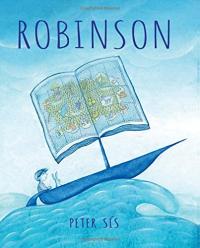
All the other kids have pirate costumes for their adventures while the narrator has one like Robinson Crusoe. When teased about it, he heads to his bedroom where he dreams he is marooned on an island, savoring the solitary adventure until his friends return. Signature illustrations are evocative, detailed, and delicate, accompanied by brief but effective narration.
Robinson

Could the white deer that Eric spots in the woods really be a unicorn? Can Eric help Dr. Brancusi, a vet, and his daughter really keep the unicorn – and her offspring – safe? Love and loss, hope and happiness are threads throughout this delicately illustrated and absorbing novel.
The Unicorn in the Barn

Clayton Byrd adores his grandfather, loves the jazz Cool Papa plays with the other bluesmen in the park; Clayton wants to be musician, too. But when Cool Papa Byrd dies suddenly, Clayton is overcome with grief. His mother who has never resolved her own childhood remains at arm’s length though his father attempts to reach the boy. Clayton tries to join the park bluesmen but instead finds a different kind of music with a gang of street kids in the New York subway. Likeable characters populate this fast-paced novel.
Clayton Byrd Goes Underground
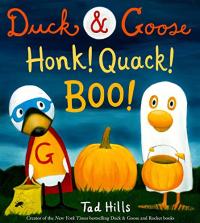
Feathered friends Goose, Duck, and Thistle become a super hero, a ghost, and a swamp monster for trick or treating. Though each enjoys Halloween, they must muster up the courage to confront their fears in this gentle, relatable, and ultimately satisfying story.
Duck & Goose, Honk! Quack! Boo!

Jasper Rabbit (first introduced in Creepy Carrots) chooses the neon green underwear rather than the plain white ones. At night, the creepy pair of underwear glows eerily and is downright difficult to discard. But once they’re gone, Jasper decides that he was too hasty. This humorous tale puts a funny spin on what frightens people.
Creepy Pair of Underwear
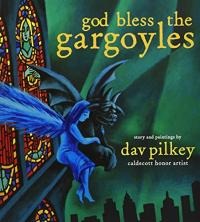
Gargoyles can be cold and frightening looking to many. In this richly illustrated picture book, angels befriend a group of gargoyles and bring them to life — revealing the warm and loving nature of these creatures.
God Bless the Gargoyles

When North Vietnamese soldiers destroy the village of 12-year-old Kia, they almost destroy her family too, because her father disappears and the rest of them flee to a refugee camp. Eventually, Kia, her brother, and her grandfather immigrate to America, where she is overwhelmed by her new life, isolated by culture and language. [ALA Booklist review]
Little Cricket

The narrator and his friend Tyler will soon start 2nd grade. Will his new teacher and the more advanced grade be as bad as the boys’ older sister warn? Happily, the younger siblings catch on to the teasing when they acknowledge that they are no longer as gullible as first graders! The funny narration is accompanied by jaunty, expressive ink and wash illustrations.
Second Grade Holdout
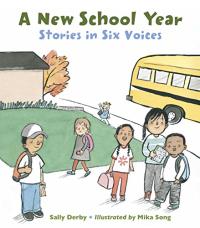
Six children, one in each grade from kindergarten to 5th, share their thoughts and anxieties as the new school year starts. Short, sensitive poems combine with lightly colored illustrations to introduce each individual. The voices and concerns of the children from diverse backgrounds are both relatable and plausible.
A New School Year: Stories in Six Voices

Getting your teacher ready for school means starting out with a big smile, then being able to show her how to find iguana books during library time and reminding her where the bathroom is if she doesn’t know. The gentle humor in this turnaround tale is sure to remind children of typical school routines and that everyone may have worries.
How to Get Your Teacher Ready
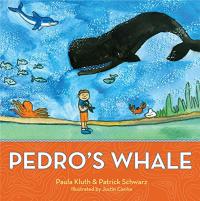
Pedro, a young boy who loves whales more than anything, is heartbroken when he’s told to put away his favorite toy whale on the first day of school. But then Pedro’s teacher discovers the secret to helping him do his best work: not only giving him his whale, but also incorporating his special interest into the whole curriculum. Soon, Pedro’s whale is helping all the children learn, as the teacher works whales into math lessons, storytime, simple science experiments, and more! Pedro’s whale helps him make friends, too, as the other children start to share his special interest.
Pedro’s Whale

Louis, a self-taught space expert is delighted to learn that his teacher has sent him to the principal’s office to attend personal space camp. Eager to learn more about lunar landings, space suits, and other cosmic concepts, Louis soon discovers that he has much to learn about personal space right here on earth. Written with style, wit, and rhythm, personal space camp addresses the complex issue of respect for another person’s physical boundaries. Told from Louis’s perspective, this story is a good resource for parents, teachers, and counselors who want to communicate the idea of personal space in a manner that connects with kids.
Personal Space Camp

All of Louis thoughts are very important to him. In fact, his thoughts are so important to him that when he has something to say, he erupts, or interrupts others. His mouth is a volcano! This story takes an empathetic approach to the habit of interrupting and teaches children a witty technique to capture their rambunctious thoughts and words for expression at an appropriate time. Told from Louis’s perspective, the story provides parents, teachers, and counselors with an entertaining way to teach children the value of respecting others by listening and waiting for their turn to speak.
My Mouth Is a Volcano!

NO is RJ s least favorite word … and he tries his best to convince his dad, his mom, and his teacher to turn No into Maybe or We’ll see or Later or I’ll think about it. Even though he doesn t have much success, RJ keeps arguing until his teacher suggests that he try to join her classroom s Say YES to NO Club. If RJ can learn how to accept No for an answer and to disagree appropriately with his teacher and parents, he can add his name to the club’s Star Board.
I Just Don’t Like the Sound of No!

Louis is a verb! He has a lot of trouble focusing and he is always doing something, but the problem is usually it’s the wrong something. It’s hard to be a verb! My knees start itching, my toes start twitching, my skin gets jumpy, others get grumpy. When it comes to sitting still it s just not my deal. Haven’t you heard… I am a verb! Louis mom teaches him how to focus by showing him a few hands on ideas that anyone can try. A helpful book for all who struggle with paying attention.
It’s Hard To Be a Verb!

Jay can make his own breakfast, dress himself, and play by himself, but sometimes he feels sad and wishes for a friend. When a magical horse appears and befriends Jay, his wish comes true. This interactive book was developed for use with children with developmental and learning differences and disabilities, including autism spectrum disorder, ADHD, and dyslexia. It is designed to help educators, parents, and caregivers teach children about language, reading, story comprehension, functional skills, and basic concepts.
Jay and Ben

When her father begins a long-distance romance with a Washington, D.C. zookeeper, twelve-year-old Frankie sends fabricated e-mail letters to the zookeeper in an attempt to end the relationship in this story about family, friendship, and growing up.
The Naked Mole-Rat Letters

Willow Chance is a 12-year-old genius, obsessed with nature and diagnosing medical conditions, who finds it comforting to count by 7s. Willow is also an outsider, a girl possibly somewhere on the autism/Asperger’s spectrum (although that is never stated). Suddenly Willow’s world is tragically changed when her parents both die in a car crash, leaving her alone in a baffling world. This story is about her journey to find a fascinatingly diverse and fully believable surrogate family.
Counting by 7s
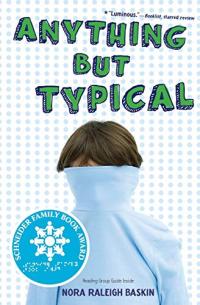
A story told entirely from the point of view of Jason, an autistic boy who is a creative-writing whiz and deft explainer of literary devices, but markedly at a loss in social interactions with “neurotypicals” both at school and at home. He is most comfortable in an online writing forum called Storyboard, where his stories kindle an e-mail-based friendship with a girl. The author describes Jason’s attempts to interpret body language and social expectations, and ultimately how Jason moves through his failures and triumphs with the same depth of courage and confusion of any boy his age.
Anything But Typical

From inside Caitlin’s head, readers see the very personal aftermath of a middle school shooting that took the life of the older brother she adored. Caitlin is a bright fifth grader and a gifted artist. She also has Asperger Syndrome, and her brother, Devon, was the one who helped her interpret the world. A compassionate school counselor works with her, trying to teach her the social skills that are so difficult for her. Through her own efforts and her therapy sessions, she begins to come to terms with her loss and makes her first, tentative steps toward friendship. (Winner of the National Book Award)
